Okay, so you’ve got a ton of leeks and you’ve already made a gigantic batch of potato and leek soup that’s completely filled up the freezer. Now what do you do with the rest of the leeks (about 10 pounds or so)? One options is to dehydrate them. Dried fruits and vegetables require no freezer space, no refrigerator space, and no electricity to keep them at the ready for use in the kitchen. In fact, it can take no electricity at all if you use a food dryer powered by the sun.
One of the many benefits of my trip to Ecology Action last November, to learn the ways of Grow BioIntensive, was meeting the innovative nature-couple Dan and Margo Royer-Miller. Dan in particular opened my eyes to the world of solar food drying. He pulled out Solar Food Dryer, by Eben Foder, and then proudly unveiled a solar food dryer that he built based on the plans in Eben’s book. The carpenter’s genes in me went nuts. Must…build…food dryer.
So I did. Here’s how:
1) Got the book. Read the whole thing.
2) Started scrounging around for wood scraps in the neighbor’s construction project. Looked on Freecycle (a local recycling forum for discarding and acquiring used stuff) for additional materials. Found one old window in our backyard with a matching screen.
3) Enlisted the help of dear ol’ Dad to cut the wood on his table saw.
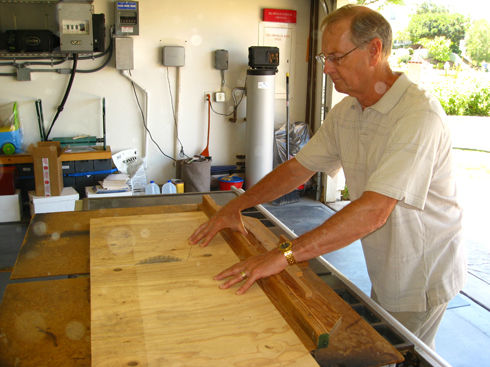
3) Went to Home Depot and the local hardware store a number of times to find the rest of the materials. I had to order a few things online, like the old-fashioned porcelain light sockets needed to fit in the unit for backup heat during cloudy days and nighttime. I also ordered food-safe screen material from Eben Foder’s website.
4) Assembly begins – I was dead set on doing the bulk of the project with as little help as possible (A.K.A. stubborn girls with cordless hand drills).
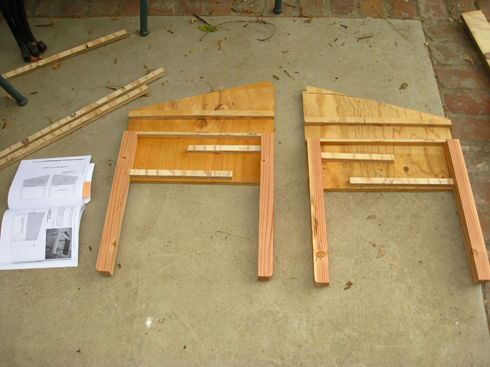
The ends of the solar food dryer with guides for shelves and absorber plate.
5) Enlisted the help of Fabulous Husband Andrew to complete the electrical backup lighting to ensure continued drying overnight and when temperatures drop due to clouds or fog (which we’ve had a lot of this summer).
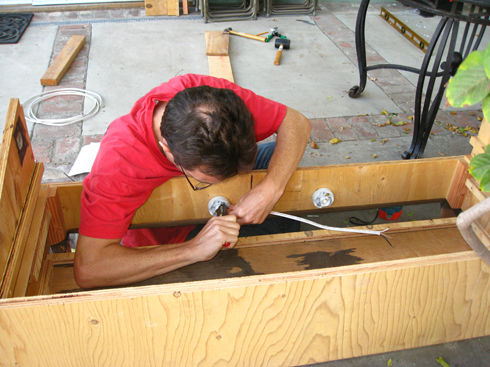
With the unit almost completely assembled, the electrical wiring has to go in before installation can continue.
6) Installed the absorber plate. Now this was a bit of a challenge that required research. After figuring out how to bend sheet metal in a specific place without the use of heavy machinery (Fabulous Husband Andrew and I were able to do it with a few pieces of wood and 4 hands), the book says to use sheet metal painted with high temperature stove paint. One glance at the back of that label told me that I didn’t want stove paint anywhere around my food. I hunted down Dan Royer-Miller and asked what he used. He confirmed that the stove paint off-gases and he advised using something like tempura paints.
After doing some checking, I found a non-toxic metal paint available online. DecoArt non-toxic metal paint did the trick:
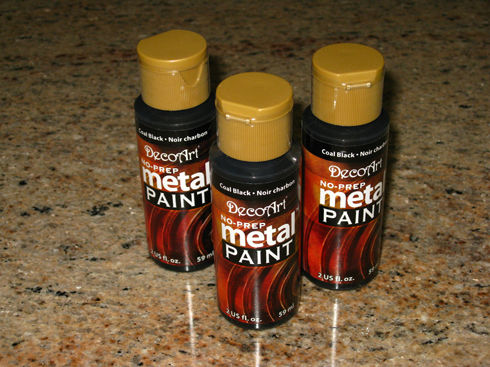
I particularly like the “no prep” part.
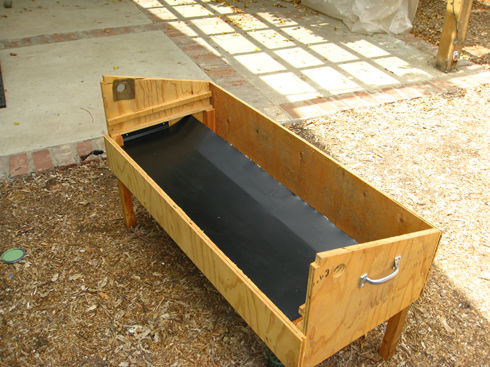
Installing was a dream – easy as pie. It took more time to figure out what materials to use than to actually cut and bend and install it.
7) Finishing the assembly – I put on the door and vents (re-using the old screen from the window screen on hand).
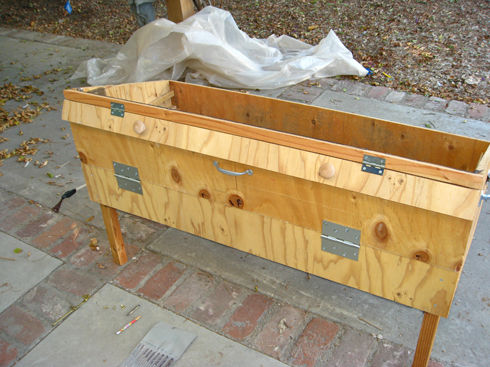
Using hinges we had on hand, we attached the door and vent that allows air to flow through the unit.
8) Now for the window – The old window needed to be broken out of its frame… or not. Turns out my measurements were a little off and the frame around the window was going to be necessary in order to make it fit. It did, however, need to be stripped and re-finished. Or not. Being unable to find the non-toxic stripper that I’ve used in the past (an orange oil based product), I decided to just paint over the thing and seal in the goodness.

The old window might have had lead in the paint, so painting over it seemed like the best solution.
9) Attached the window to the dryer – The final step was to set the window on top of the dryer and bracket it down. Let me tell you, when you don’t have a vice, bending brackets to the shape you need them is a pain in the @$$. Still, mission accomplished.

Finished as the sun was setting. Still needs a coat of linseed oil varnish on the outside.
Total cost for this adventure: $118.84 for new screening, sheet metal, hardware, electrical wiring and fixtures from Fruit Ridge Tools, and one small hole in my hand (wayward drill). Salvaged materials include the window, screen, wood, some hardware, staples, reflective tape and elbow grease. Relatively speaking, you can spend around $400 or so on a fancy high-powered dryer, but you still have to plug it in. When I tried to find pricing on solar food dryers, I couldn’t find any for sale. So I guess that makes this machine – priceless!
So – what have I learned on this adventure? Here are a few morsels of wisdom I’d like to share:
A) Don’t use plywood for the thin strips of wood that form your shelves and door stop – plywood splits (such a bummer). Use solid lumber.
B) Don’t bother shopping around for porcelain light sockets, everyone carries the same kind, and it won’t fit your dryer. Just order them online (link is above).
C) You only need one tube of paint for the absorber plate. I ordered 3 to be safe. Now I have extra paint.
D) Enjoy the process. The satisfaction of building something with your own hands (even slightly damaged hands) is beyond joyful.
Coming soon – our first batch of solar dried food: Leeks!


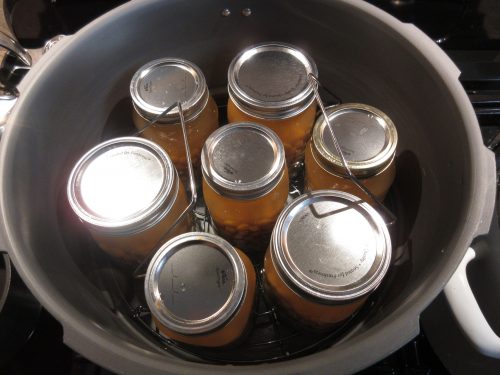

Pingback: Preserving: Drying Peppers to Make the Harvest Last - Gardenerd
Pingback: Gardenerd: Organic Edible Gardening | Waaaay Too Much Mint
Pingback: Gardenerd: Organic Edible Gardening | Margo and Dan’s BioIntensive Farm
The solar dehydrator seems great but you need a lot of space for it. An electric dehydrator isn’t so eco friendly but it is a good solution if space is an issue.
Very worthwhile page. Your own web site is rather quickly starting to be one of my top picks.
What a great DIY project! Eben’s book looks like an interesting read. Keep us posted on the results of your solar drying!
Ah – that would have saved me about $10. Oh well. Next time… Good luck building your next one!
Hah! That food dehydrator looks disturbingly familiar 🙂
Good to see that you carried it out. You should have asked me about porcelain light sockets – we have a big old house to take apart, and I think I could have gotten you about 20 of them…
And it is simply good to read about other people building things under less-than-ideal conditions, in terms of tools and materials. It makes me feel like I’m in good company.
We’ll be building one for our place here, since the ones back in Willits are a bit big to bring back, even on the train.
Happy Drying!